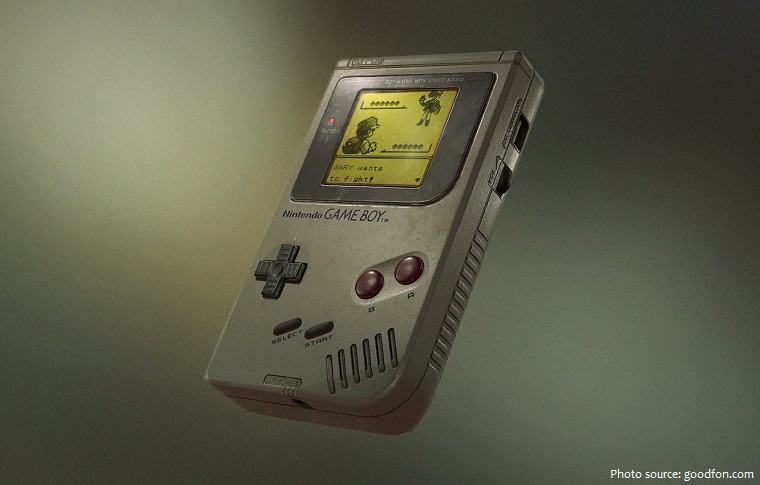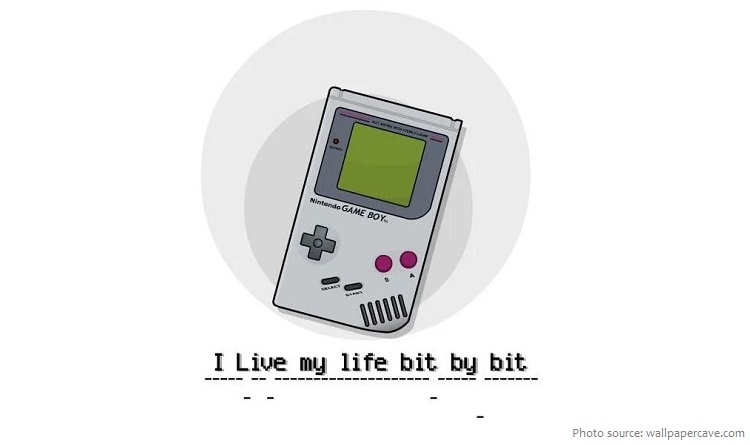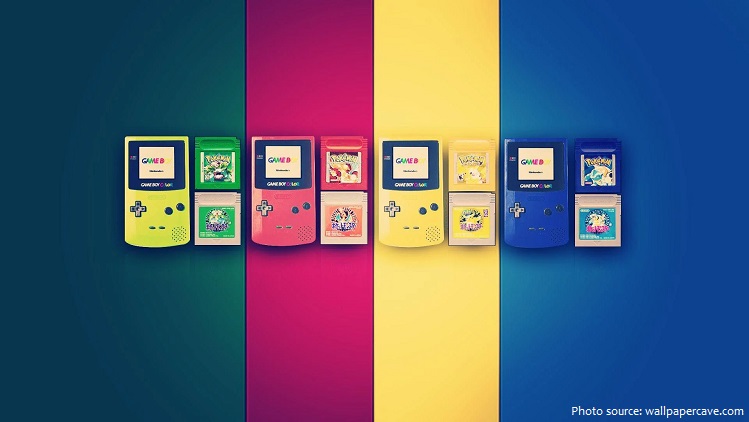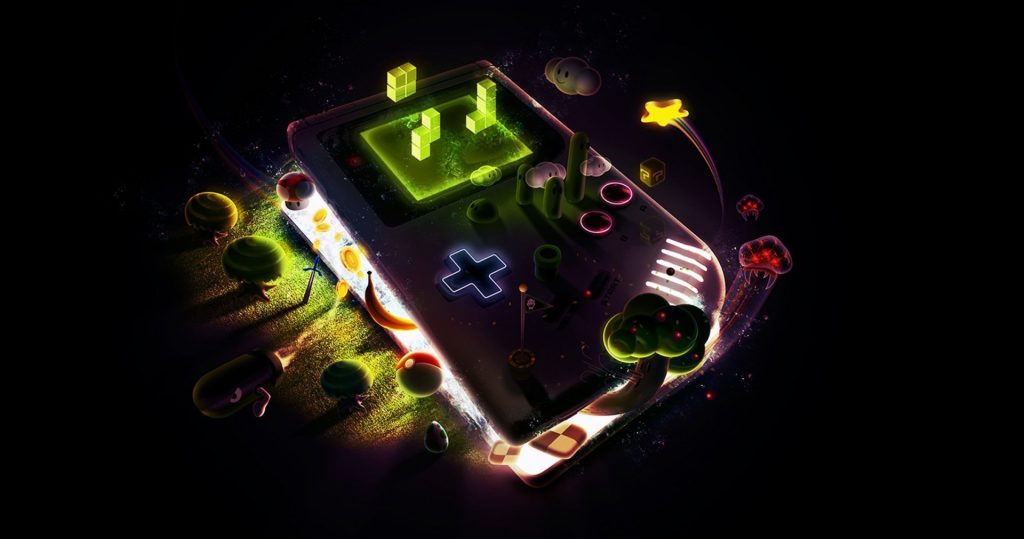
The Game Boy is an 8-bit handheld game console developed and manufactured by Nintendo.
The Game Boy launched in Japan on 21 April, 1989, at the price of 12,500 yen and immediately sold out of its initial run of 300,000 units. The console was released in North America also the same year, then in Europe in late 1990.
It contained an 8-bit Z80 processor with a monochrome LCD display and 4-channel stereo sound. Shortly after the introduction of the Game Boy, Sega and Atari released handheld games, the Sega Game Gear and the Atari Lynx. Both had superior color LCD displays but both also suffered from short battery life and limited game availability.

At launch, it was sold either as a standalone unit, or bundled with one of several games, among them Super Mario Land and Tetris.
Though it was less technically advanced than the Lynx and other competitors, notably by not supporting color, the Game Boy’s lower price along with longer battery life made it much more successful.
The Game Boy was designed by Nintendo’s chief engineer Gunpei Yokoi and its Nintendo R&D1 team. Following the popularity of the Nintendo Entertainment System, he held a meeting with Nintendo president Hiroshi Yamauchi, saying that he could do a handheld system with interchangeable games.
The original internal code name for the Game Boy is Dot Matrix Game, referring to its dot-matrix display in contrast to the preceding Game & Watch series (which Yokoi had created in 1980) that has segmented LCDs pre-printed with an overlay, limiting each model to only play one game.

The original Game Boy – initially available only in grey casing – was given a fresh lick of paint with a set of new colours in the early 1990s.
In 1997, Nintendo went one better, shrinking the Game Boy’s dimensions to create the even smaller Game Boy Pocket series. But whatever its appearance, Game Boy remains focused on granting gamers a mountain of fun in a miniature-sized package.
The Game Boy Color released in 1998 was the first true successor to the original Game Boy. As the name implies, it could support up to 56 colors. The Game Boy Color was backward compatible, meaning it could also play original Game Boy games. While the original Game Boy dominated the portable market for almost 10 years before getting a proper upgrade, Nintendo would replace the Game Boy Color in less than three years.
Another revision was the Game Boy Light, released in Japan on April 14, 1998, which was only available in Japan. The Game Boy Light was a console that was slightly bigger than the Game Boy Pocket. The Game Boy Light offered a feature that the previous versions of the Game Boy did not have which was “an electroluminescent back light for low-light conditions.”

The must-have game at the time was Super Mario Land, a typically quirky and enjoyable platformer which replicated many features of the classic Super Mario Bros series. It would go on to sell over 18 million copies.
Best-selling Game Boy videogame is Pokémon Red and Blue. It had shifted 31.37 million copies as of 9 March 2018, according to VGChartz. Breaking that figure down into markets, Pokémon Red and Blue sold the most inNorth America (11.27 million), closely followed by Japan (10.22 million).
Production of the Game Boy continued into the early 2000s, even after the release of its second successor, the Game Boy Advance, in 2001. Production ceased in 2003.
Nintendo shipped over 100 million units of the Game Boy and its successor, the Game Boy Color around the world.

The smallest Game Boy is 54 mm (2.12 in) long, and was created by Jeroen Domburg (Netherlands) as measured in Shanghai, China, on 15 December 2016. The Game Boy fits on a key chain, and boasts an impressive selection of the original Game Boy games. Jeroen designed and built the Game Boy himself, meticulously selecting minuscule components to fit inside the tiny compartment.
The largest Game Boy is 1.01 m tall, 0.62 m wide and 0.2 metres deep, and was created by Ilhan Ünal (Belgium) as measured in Antwerp, Belgium, on 13 November 2016. The Game boy is fully functional, and can play directly from original Game Boy cartridges.
The highest score on Tetris for Game Boy is 752,668 points, achieved by Alex Holbrook (UK), as verified by Twin Galaxies on 25 June 2017. Alex’s score beats Uli Horner’s (Germany) record of 748,757 points that had held for nearly six years. A few places below Holbrook in eighth place is Apple co-founder, Steve Wozniak (USA), with 507,110 points, according to Twin Galaxies.
The Game Boy is a favourite instrument of “chiptune” artists who use vintage games hardware to create electronic music. By plugging in bootleg sequencer cartridges like Nanoloop, musicians are able to tease an array of weird sounds from the hardware. Artists such as Pixelh8, Nullsleep and Mikro Orchestra have produced amazing tracks and live multimedia performances, often from hacked Game Boy units.
